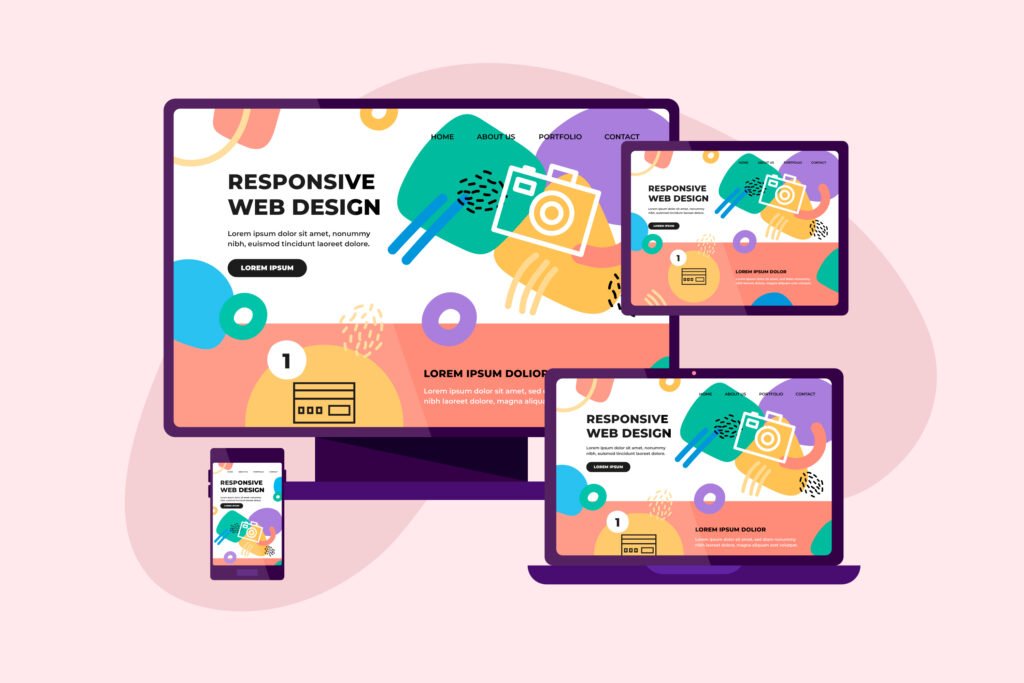
Responsive Web Designing: Crafting Seamless Experiences Across Devices
Introduction:
Welcome to our blog page dedicated to exploring the art and science of responsive web design with Upbryt Technology. In today’s digital landscape, where users access websites on a myriad of devices, creating a seamless and consistent user experience across different screen sizes is paramount. Join us as we delve into the principles, techniques, and best practices of responsive web design, and discover how Upbryt Technology can help you craft engaging and user-friendly websites that adapt effortlessly to every device.
Understanding Responsive Web Design
Responsive web design is a design approach that ensures a website looks and functions optimally across various devices, including desktops, laptops, tablets, and smartphones. It involves using flexible layouts, fluid grids, and media queries to adjust the website’s appearance and behavior based on the screen size and orientation of the device.
The Importance of Responsive Design
With the proliferation of mobile devices, having a responsive website is no longer optional—it’s essential. Responsive design ensures that users have a consistent and enjoyable experience regardless of the device they’re using. Whether they’re browsing on a large desktop monitor or a small smartphone screen, they should be able to access content easily and navigate seamlessly.
Key Principles of Responsive Design
Fluid Grids: Instead of fixed-width layouts, responsive websites use fluid grids that adjust proportionally to the screen size.
Flexible Images and Media: Images and media should scale dynamically to fit the available space without losing clarity or quality.
Media Queries: Media queries allow developers to apply different styles based on factors like screen size, resolution, and orientation.
Progressive Enhancement: Start with a solid foundation for desktop users and then enhance the experience for smaller screens using techniques like mobile-first design.
Techniques for Responsive Design
Mobile-First Approach: Designing for mobile devices first ensures a focus on essential content and functionality, leading to a more streamlined user experience.
Viewport Meta Tag: Setting the viewport meta tag in the HTML ensures that the website is scaled properly on mobile devices and prevents users from having to pinch and zoom.
CSS Flexbox and Grid: CSS Flexbox and Grid layouts provide powerful tools for creating flexible and responsive designs with less code.
Responsive Images: Techniques like using the srcset attribute and the picture element allow developers to serve different image sizes based on the user’s device and screen resolution.
Upbryt Technology’s Approach to Responsive Design
At Upbryt Technology, we specialize in creating responsive websites that deliver exceptional user experiences across all devices. Our team of experienced designers and developers employs the latest techniques and technologies to ensure that your website looks great and performs flawlessly on every screen.
From the initial concept and design to development and testing, we work closely with our clients to understand their unique needs and deliver custom solutions that exceed expectations. With Upbryt Technology by your side, you can rest assured that your website will stand out in today’s competitive digital landscape.
Conclusion:
Responsive web design is not just a trend—it’s a necessity in today’s mobile-first world. By embracing responsive design principles and leveraging the expertise of Upbryt Technology, you can create websites that provide seamless experiences across all devices. Whether you’re launching a new site or redesigning an existing one, responsive design is the key to reaching and engaging your audience effectively. Let Upbryt Technology help you make your website shine on every screen!

Leave A Comment